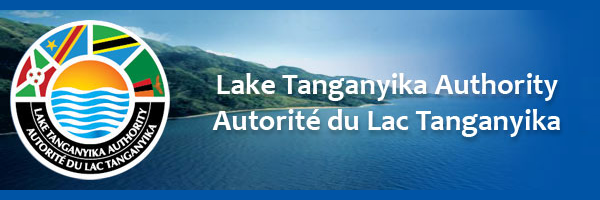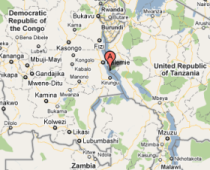New Guide to some invasive plants affecting Lake Tanganyika
Lake Tanganyika Authority in collaboration with UNDP/GEF Project and IUCN Invasive Species Initiative organized a workshop on invasive species affecting Lake Tanganyika at Kibunoah Hotel, in Bujumbura - Burundi, for the Burundi and DR Congo Technical Teams on Environmental Issues. "From this 23rd to 24th August, 2012, you will be involved to how you can control species that have become invasive and be trained how you can prevent new invasions in order to develop a Monitoring Programme for Invasive Species for the four riparian countries of Lake Tanganyika” said Mr. Gabriel Hakizimana, Director of Environment of Lake Tanganyika Authority – LTA.
According to Mr. Simbotwe Mwiya, Regional Coordinator of UNDP/GEF Project on Lake Tanganyika, “there is increasing pressure on Lake’s natural resources – thus need for the protection of Lake Tanganyika. In response to this need, the Lake Tanganyika Convention was signed by the four riparian states in 2003 and a Strategic Action Programme (SAP) was formulated to help in the establishment of a regional monitoring system in order to contribute to long-term sustainable management of Lake Tanganyika”.
Then, a guide to some invasive plants affecting Lake Tanganyika has been produced. “ This guide is a product of the SAP through a project supported by UNDP/GEF, managed by UNOPS and implemented by International Union for Conservation of Nature (IUCN)”, indicated Mr Mwiya.
Dr Geoffrey Howard, one of authors of that guide, mentioned that the Invading species – especially invasive plants - can affect the environment in many ways – which are able to have short and long distance impacts on water quality and quantity relevant to the Lake Tanganyika. To Ms Esther Abonyo, co-author, indicated to the technical teams from Burundi and DR Congo that the initial introduction of these invasive plants may, in rare cases, be natural, but most often introduction is associated with people and can be intentional or unintentional (accidental). Most species introductions do not survive to the next stage of establishment.
“This process and its steps from introduction to invasion may take weeks or months, sometimes years or even decades or centuries (as in the case of some trees). This is why we need to take note of new species that arrive and join the flora or fauna - and check if they have a reputation of invasion elsewhere” recognized Dr Howard.
In the absence of national agencies solely responsible for the prevention and management of biological invasions (sometimes called Biosecurity Departments), invasions become the responsibility of the land ( and water) managers, biodiversity managers and human livelihood and welfare organizations. This is the origin of the idea to develop a monitoring system for invasive alien species in and around Lake Tanganyika. 31 groups of species are described in the Guide to some invasive plants affecting Lake Tanganyika.
Document Actions













